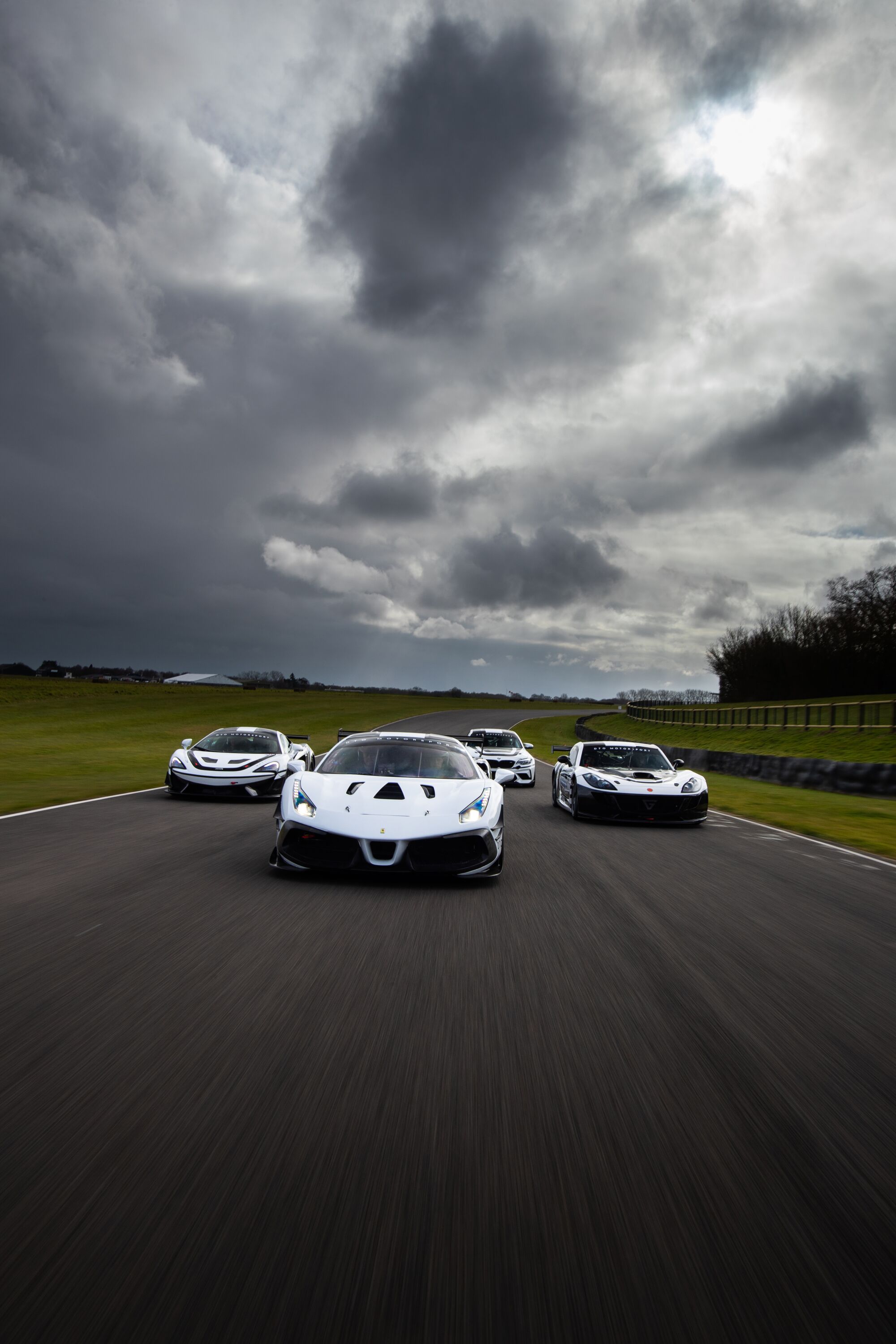When Farina and Alfa Romeo came to Goodwood
Alfa Romeo’s victory in Grand Prix racing’s first World Championship for Manufacturers, secured 100 years ago, is one of the big themes set for celebration at the 2025 Goodwood Revival. Often overlooked, the pre-war forerunner to the modern Formula 1 World Championship really shouldn’t be forgotten.

For modern generations of fans, Alfa’s eminence as Italy’s great force in motorsport, pre-dating Ferrari building its legend as racing’s greatest constructor, must seem like an awful long time ago. Let’s face it, it is!
But, after World War II the Quadrifoglio was also the first major manufacturer to stamp its mark on the newly framed Formula 1, when it dominated the early years of the World Championship we know today.
As the Goodwood Motor Circuit was establishing itself as the spiritual successor to Brooklands, and a much-loved venue for stirring non-Championship F1 races, a single ‘works’ Alfa Romeo made what turned out to be the factory’s one and only period visit. On that occasion, F1’s first World Champion driver, Dr Giuseppe Farina, left a lasting impression during his star appearance in West Sussex.
Ahead of Revival’s Alfa celebrations, let’s scroll back to that memorable day, on 29th September 1951.

The Alfetta’s star turn
In that second season of the F1 World Championship, a major powershift was already in full swing. Ferrari had claimed its first Grand Prix win as a fully-fledged constructor at Silverstone, courtesy of the ‘Pampus Bull’ — José Froilán González — while Alberto Ascari, son of Alfa’s pre-war great Antonio, who played a key part in its 1925 AIACR World Manufacturers’ Championship success, had swept both the German and Italian Grands Prix.
Versus Ferrari’s 4.5-litre V12 force, the elegant 1.5-litre supercharged ‘Alfetta’, in bulked up 159 form but with its roots buried firmly in the pre-war era, was beginning to wheeze.
Two weeks after taking over Felice Bonetto’s 159 to chase Ascari and Gonzalez to a valiant third place at Monza, Farina pitched up at Goodwood with three mechanics and one of the glorious Alfas transported direct from Italy in a vast Dodge truck.
There was no works Ferrari presence and the flawed home-hero BRMs had stayed away too, but Reg Parnell would offer some resistance in British industrialist Colin Vandervell’s Thinwall Ferrari 375. A large and enthusiastic British crowd turned out in significant number to witness a special Goodwood occasion.

Triples all round for Farina and Moss
“It is always pleasant to go to Goodwood,” reported Motor Sport from the late summer meeting that featured a mix of short scratch and handicap races. “You hear praise of the facilities on all sides and the short, Brooklands-style races are most entertaining. Consequently a large if not record crowd flocked there on September 29th to enjoy an excellent ‘card’ in ideal weather.”
The main headlines were a hat-trick of wins for both Farina and young Stirling Moss, and sadly one serious injury, on an action-packed day at the track.
Moss kicked things off with a win in the Madgwick Cup five-lapper, leading fellow HWM racers Lance Macklin and George Abecassis. He also ran out an easy victor in the sportscar race, driving a Jaguar C-type against limited opposition, then added one of the handicap races to his haul.
Again in the C-type, he overcame a significant time penalty to take the lead on the fourth of five laps at St. Mary’s. “As usual, he made it look an entirely effortless drive,” reported an impressed Motor Sport.

Meanwhile, Farina pulled the Alfetta out for a trio of appearances. He fired it up with barely a minute to go before the start of the Woodcote Cup, and stormed away from Parnell’s Ferrari to set a new lap record at 96.92mph.
Then he too claimed one of the handicappers, in what Motor Sport reported as “quite the finest race ever seen at Goodwood and a complete justification for short handicap races.”
The HWMs had a 47 second head start on Parnell and Farina running on scratch, and it turned out the handicapper really had nailed his sums. Moss was out front nursing a developing misfire and must have known the Alfa was coming for him. “Farina was driving so calmly, yet so very, very fast, passing left or right of other cars as expedient,” gushed Motor Sport.
On the last lap, Moss led Farina down to Woodcote, but the great Italian powered by on the run to the chequered flag to win by just two seconds, with Parnell and Abecassis not far behind Moss. Farina had twice broken his new lap record in the chase for victory.

Farina wins the Goodwood Trophy
The main race of the day was the Daily Graphic-sponsored, 15-lap Goodwood Trophy F1 race — and there was never really any doubt over the outcome. But Parnell, who remarkably won the first five F1 races held at Goodwood between its opening in 1948 and ’50, did his best to at least give Farina a challenge.
Parnell scorched into an early lead, his first lap from a standing start recorded at an impressive 95mph. But the following time around the Alfetta was through, Farina driving “impeccably” with perfect four-wheel drifts.
In a display of unblemished race driving, he left the lap record at 97.36mph to beat Parnell by nearly six seconds. Tony Rolt, in Rob Walker’s Delage, was a full lap down in third, with Moss’ HWM fifth behind Bob Gerard’s ERA.
But the accident that befell Brian Shawe-Taylor cast a shadow over what had otherwise been a first-class day of Goodwood racing. Garage proprietor Shawe-Taylor, who had raced in both the 1950 and ’51 British Grands Prix, spun his ERA and was hit by Toni Branca’s car approaching St Mary’s. He survived, but never raced again.

Alfa’s last hurrah
A month later, at the Spanish Grand Prix at Pedralbes, Juan Manuel Fangio secured the first of his eventual five World Championships, in an Alfetta. Ascari’s victories had pulled him into range of stealing the crown, but a disastrous Ferrari error undid his bid.
The size of wheels and tyres chosen for the race created excessive overheating and degradation, and the Ferrari challenge wilted. Fangio won comfortably from Gonzalez and Farina to become Alfa’s second — and to date last — F1 World Champion.
The writing was on the wall for the great Alfa Romeo team. Lacking the funding to build and develop a new car to take on the upstart Ferrari, the factory bowed to pressure and withdrew from Grand Prix racing. It only returned in 1979, but in much-reduced form and never got close to reviving its greatest days in motorsport, both pre-war and in those early, heady days of the World Championship.
Turns out the Goodwood patrons on that late September day in 1951 had borne witness to the final knockings of one of racing’s great empires. But as the celebrations at Revival will remind us, Alfa Romeo and its great Grand Prix cars will never be forgotten.
Tickets for the Goodwood Revival are now limited! Saturday tickets are selling fast, so secure yours now to avoid missing out on the world's best historic motorsport event.
Images courtesy of Getty Images.
revival
event coverage
alfa romeo
goodwood trophy 1951
Guiseppe Farina









